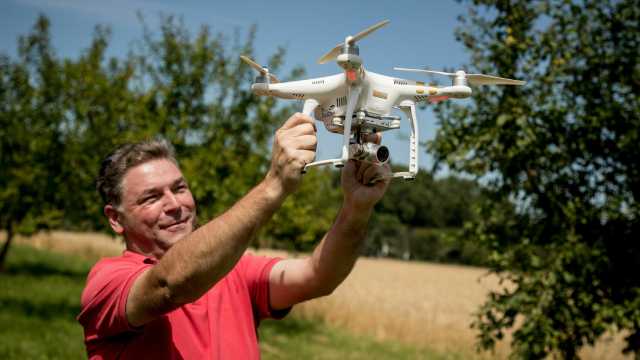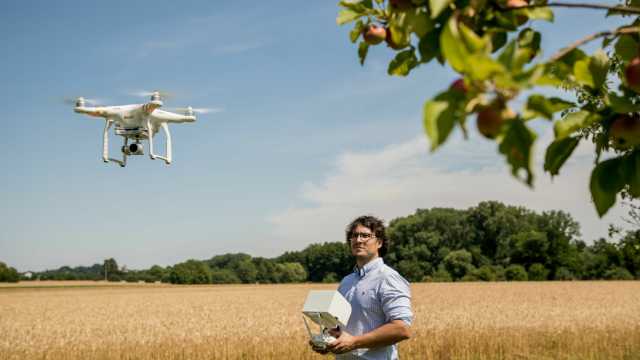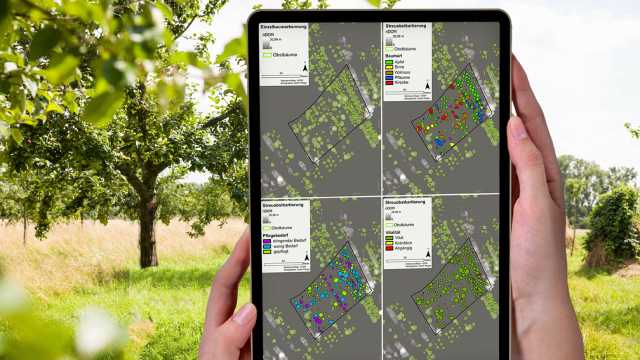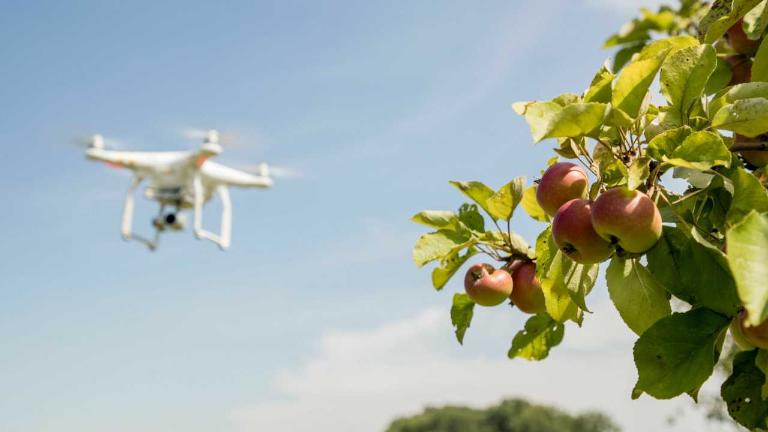Drones to protect orchards and biodiversity: the Audi project
With images taken by drones, a meadow and orchard register has been created. It allows their growth to be taken care of and private individuals to sponsor fruit trees.
Audi's commitment to sustainability is not limited to cars and everything related to manufacturing, but goes far beyond that. One example is the project launched by Audi Environmental Foundation during the summer of 2018, in collaboration with the University of Heidelberg, to preserve biodiversity and care for orchards using drones.
These orchards, covering ten hectares within an area of about five hundred hectares, belong to the community of Bad Schönborn, which is located between Heidelberg and Karlsruhe, Germany. Here the drones carried out a comprehensive digital monitoring operation, through which all fruit trees were automatically categorized and evaluated. Specifically, trees were classified according to their health status so that targeted care measures could be activated to improve their vitality. In addition, a platform was created to collect donations from individuals to sponsor the care of fruit trees.
Safeguarding the natural habitat
Other partners in addition to the Audi Environmental Foundation and the University of Heidelberg are involved in the project, namely the Countryside Conservation Association for the Karlsruhe District and the Bad Schönborn Task Force for Local Nature and Environment (AHNU). The final results of the study reported that about 20% of the plants were in urgent need of care, about half needed a lesser amount of care, and 28% were healthy.
Specifically, the orchards consist of two-thirds apple trees, followed by pears, walnuts, plums and cherries; the second part of the project involves regular pruning. All of this, in addition to improving the vitality of the trees, will support the biodiversity of the landscape in the long term, safeguarding the habitat of domestic animals and insects.

Processing data
"The big challenge was processing the huge volume of data obtained from the drones that took a picture every two seconds, totaling about 120,000 images. Creating a valid general picture out of all this data required enormous computing power", says Alexander Siegmund, Professor of Physical Geography and head of the project team at the University of Heidelberg.
In addition, images taken by drones are not the only information to be processed: multispectral images taken from above are also taken into account, which provide information about the intensity of photosynthesis in the trees. This is important because diseased trees perform less photosynthesis and reflect light differently than healthy trees. Visible structural features, such as top density, proportion of deadwood, and length of new shoots, were also factored into the assessment of the trees’ vitality. Then, based on the totality of information gathered, a decision is taken on how to intervene.

Environmental education
The choice of treatments is part of the environmental education goals that the project has pursued from the outset, including through lectures in schools and the sharing of results, with the aim of raising awareness of the landscape topic. The next step is to encourage people to contribute: any citizen in the region can sponsor and care for the fruit trees through a specially developed platform.
An online mapping service has also been created, the results of which are available within a Web-based geographic information system (WebGIS); this allows people to actively interact and enables institutions and government bodies to use the database.

Engaging the population
Rüdiger Recknagel, Director of the Audi Environmental Foundation, emphasizes the project's comprehensive approach, "The work of our foundation unites the use of modern technologies with a conservation mindset. This project combines scientific expertise with environmental education and individual engagement. Local people can learn new things through active participation and harvest with satisfaction the fruits of the trees they have 'sponsored.' This creates a lasting awareness for habitat conservation and biodiversity. This project is an excellent example of how well modern geotechnology can be used to conserve the natural landscape while raising public awareness", Siegmund concludes.
Source: AUDI AG
VGI | Responsible OU: VP | Creation date: article date | Class 9.1
